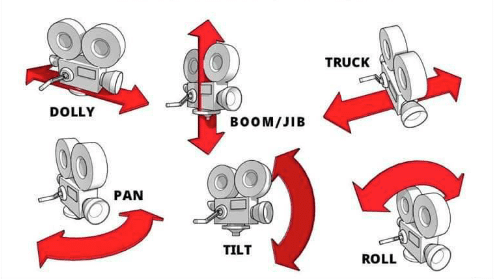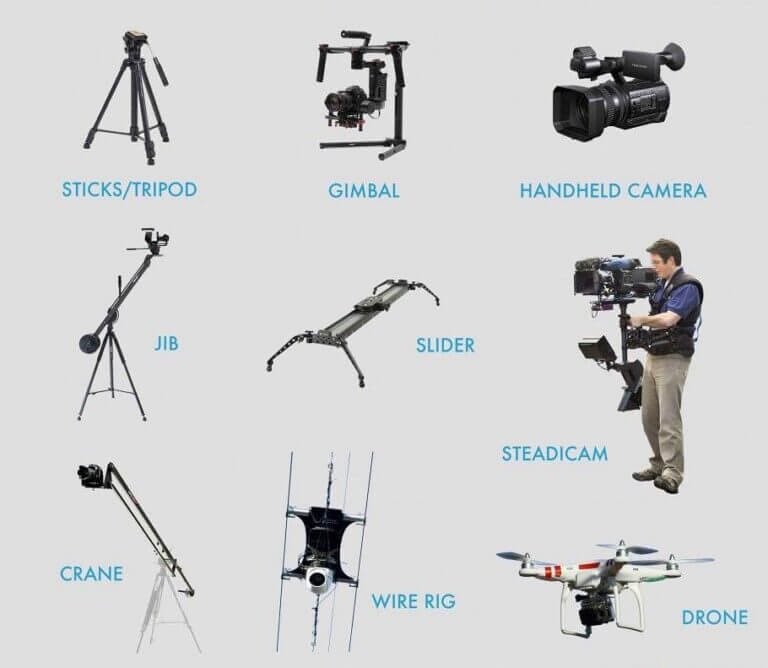As a filmmaker and cinematographer, I often find myself fascinated by the power of camera movements in enhancing narrative and visual impact. The way a camera moves through a scene can dramatically change the way an audience perceives a story, and it is a vital tool in the hands of skilled directors and cinematographers.
In this article, I will delve into the various aspects of camera movement, exploring its role in storytelling, its effect on pacing and rhythm, and its ability to create visual depth and dimension. I will also discuss the technical side of camera movement, including the equipment and tools used to achieve specific effects and look at the future of camera movement in filmmaking.
So, let’s embark on this journey behind the lens, exploring the complex art of camera movement and its powerful influence on narratives and visuals.
Table of Contents
The Role of Camera Movements in Storytelling
Camera movement is an essential tool in the filmmaker’s arsenal, and the role in storytelling is multifaceted. It can be used to guide the viewer’s attention, create tension or emotion, and even serve as a character in its own right.
First and foremost, camera movement helps to establish the visual language of a film. It can set the tone and mood, and contribute to the overall atmosphere of a scene. For example, a slow, steady camera movement can create a sense of calm and tranquility, while a rapid, shaky movement can evoke feelings of chaos and disorientation.
In addition, camera movement can help to create a sense of space and geography within a scene. By moving through a location, the camera can provide the viewer with a better understanding of the environment in which the characters exist, and help to establish the relationships between different elements within the frame.
Finally, camera movement can also be used to provide information and context to the viewer. For example, a tracking shot might follow a character as they move through a space, revealing important details about their surroundings, while a zoom might draw attention to a specific object or person, highlighting its significance within the narrative.
Different types of camera movements and their effects
There are many different types of camera movements, each with its own unique effects and implications for storytelling. Some of the most common movements include pans, tilts, dolly shots, crane shots, and handheld shots.
- Pans involve rotating the camera horizontally, either left or right, across a scene. This movement can be used to reveal new information, create a sense of space, or emphasize a relationship between two characters or objects.
- Tilts involve rotating the camera vertically, either up or down and are often used to emphasize the scale or height of a subject or to create dramatic tension.
- Dolly shots are achieved by physically moving the camera through a scene, either on a dolly track or with a handheld stabilizer. These shots can create a sense of movement and fluidity and can be particularly effective in conveying a character’s emotional journey.
- Crane shots involve moving the camera vertically or horizontally using a crane or jib. These shots can create a sense of grandeur and scale and are often used to establish the setting of a scene or to reveal information from a unique perspective.
- Handheld shots are captured without the use of a stabilizer, resulting in a shaky, sometimes erratic movement. This can be used to create a sense of urgency, unease, or chaos, and is often employed in action sequences or scenes of intense emotion.
Each of these camera movements has its own unique effect on the narrative and visual impact of a scene, and a skilled filmmaker will carefully choose the appropriate movement to enhance their visual storytelling.

The impact of camera movement on pacing and rhythm
Camera movement plays a crucial role in determining the pacing and rhythm of a film. By manipulating the speed and direction of camera movements, a filmmaker can create a sense of tension or relaxation, urgency or contemplation, and can control the flow of the narrative.
Slow, steady camera movements can create a sense of calm and tranquility, allowing the viewer to absorb the details of a scene and providing space for contemplation. These movements are often employed in moments of introspection or reflection, when a character is experiencing a significant emotional shift, or when the film’s themes are being explored in depth.
Conversely, rapid, erratic camera movements can create a sense of chaos and urgency, propelling the viewer through a scene at a breakneck pace. These movements are often used in action sequences, chase scenes, or moments of high tension, and can help to create a sense of excitement and energy.
By carefully controlling the pacing and rhythm of their camera movements, filmmakers can guide their audience’s emotions and create a more immersive and engaging viewing experience.
The role of camera movement in creating visual depth and dimension
One of the most powerful effects of camera movement is its ability to create a sense of visual depth and dimension within a scene. By moving through space, the camera can provide the viewer with a more immersive and dynamic perspective and can help to establish the relationships between different elements within the frame.
For example, a dolly shot that moves towards or away from a subject can create a sense of depth, as the viewer is able to see the changing relationship between the subject and its surroundings. Similarly, a tracking shot that follows a character as they move through space can provide the viewer with a better understanding of the environment in which the character exists and can help to create a sense of space and geography.
By skillfully employing camera movement, filmmakers can create more visually engaging and dynamic scenes and can enhance the overall narrative and visual impact of their films.

The art of matching camera movement to character emotions
Camera movement can be a powerful tool for conveying character emotions and internal states. By matching the movement of the camera to the emotional journey of a character, a filmmaker can create a more immersive and empathetic viewing experience.
For example, a character experiencing a moment of intense emotion might be accompanied by a rapid, shaky handheld shot, reflecting their inner turmoil and instability. Conversely, a character finding a moment of peace or clarity might be accompanied by a slow, steady dolly shot, creating a sense of calm and tranquility.
By carefully considering the emotional state of their characters and choosing the appropriate camera movement to reflect this, filmmakers can create a more emotionally resonant and engaging narrative.
Innovative camera movement techniques in iconic films
Throughout the history of cinema, innovative camera movement techniques have played a crucial role in the creation of some of the most iconic and memorable films. Here are a few examples of groundbreaking camera movement techniques in filmmaking:
- “Citizen Kane” (1941) – Orson Welles’ groundbreaking film used a variety of innovative camera techniques, including deep focus photography and low-angle shots, to create a visually striking and immersive narrative.
- “The Shining” (1980) – Stanley Kubrick’s horror masterpiece made extensive use of Steadicam technology, allowing for smooth, fluid camera movements that heightened the sense of tension and unease throughout the film.
- “Children of Men” (2006) – Alfonso Cuarón’s dystopian thriller featured several long, unbroken tracking shots, immersing the viewer in the film’s intense action sequences and creating a sense of urgency and chaos.
These examples illustrate the power of innovative camera movement techniques in shaping the visual and narrative impact of a film and demonstrate the importance of pushing the boundaries of what is possible with camera movement.
The technical side: camera equipment and movement tools
Achieving precise and controlled camera movement requires both technical knowledge and a range of specialized equipment and tools. These can include dollies, cranes, jibs, Steadicams, and handheld stabilizers, each with its own unique capabilities and limitations.
- Dollies are wheeled platforms that allow for smooth, controlled camera movement along a track or across a smooth surface. They can be used for a variety of shots, including tracking, dolly-in, and dolly-out shots.
- Cranes and jibs are mechanical arms that can be used to move the camera vertically or horizontally, providing dramatic and sweeping camera movements that can create a sense of scale and grandeur.
- Steadicams are handheld stabilizers that use a combination of counterweights and gimbals to create smooth, fluid camera movement, even when the operator is walking or running. They have become an invaluable tool for filmmakers looking to create dynamic, immersive shots.
- Handheld stabilizers are similar to Steadicams but are generally smaller and lighter, making them more accessible to indie filmmakers and those working with smaller cameras.
By understanding the capabilities and limitations of each of these tools, filmmakers can make informed decisions about how best to achieve their desired camera movements and enhance the narrative and visual impact of their films.

The future of camera movements in filmmaking
As technology continues to evolve, the possibilities for camera movement in filmmaking are constantly expanding. New tools and techniques are being developed that allow camera operators for even greater control and flexibility, and filmmakers are continually pushing the boundaries of what is possible with camera movement.
One example of this is the development of drone technology, which allows for aerial shots and sweeping camera movements that were previously impossible or prohibitively expensive to achieve. Similarly, advances in virtual reality and 360-degree filmmaking are opening up new possibilities for immersive camera movement and storytelling.
As we look to the future of filmmaking, it is clear that the role of camera movement in enhancing narrative and visual impact will continue to grow and evolve. By staying abreast of these developments and continually pushing the boundaries of what is possible, filmmakers can create truly groundbreaking and memorable films.
Mastering the art of camera movements for powerful narratives and visuals
The role of camera movement in enhancing narrative and visual impact is a complex and multifaceted one. From its influence on storytelling and pacing to its abilityto create visual depth and dimension, camera movement is a vital tool in the hands of skilled filmmakers.
By carefully choosing the appropriate camera movement for each scene and character, filmmakers can create more immersive and engaging narratives, and enhance the emotional impact of their films. And by staying abreast of the latest technological developments and pushing the boundaries of what is possible with camera movement, they can continue to create groundbreaking and memorable films.
So, to all the aspiring filmmakers and cinematographers out there, I encourage you to explore the art of camera movement, experiment with different techniques and tools, and continue to push the boundaries of what is possible. With dedication, passion, and a deep understanding of the power of camera movement, you too can create truly powerful narratives and striking visuals.

